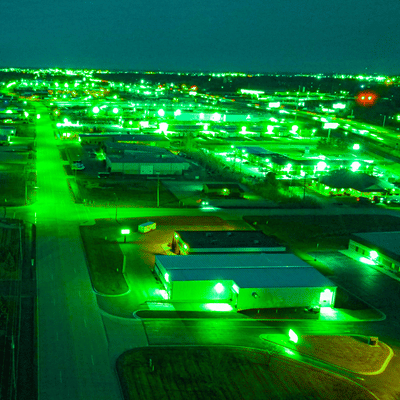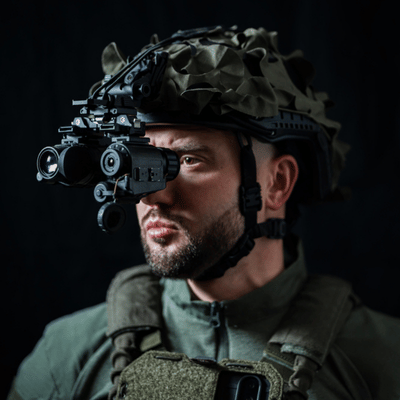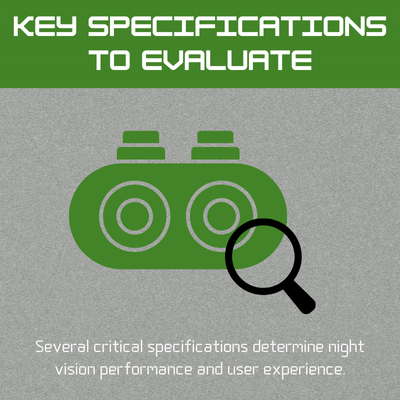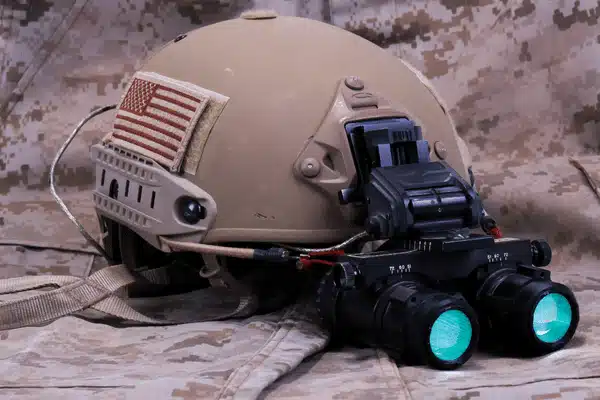Night vision technology has evolved from being used only by the military to becoming valuable equipment for law enforcement, pilots, hunting, and outdoor adventures. Today’s night vision goggles make it possible to see clearly after dark, supporting everything from navigation in low light to surveillance in the field.
Modern devices come with different features such as magnification, image clarity, and durability, so choosing the right pair depends on your specific needs and budget. Whether you plan to use them for hunting trips, law enforcement duties, or outdoor navigation, the right night vision goggles can greatly expand what you are able to do safely at night.
How Night Vision Works

Night vision goggles work by using an image intensifier tube to boost even the smallest traces of ambient light. When photons hit a photocathode, they are converted into electrons, which then pass through a microchannel plate that multiplies them thousands of times. Those electrons strike a phosphor screen, turning them back into visible light and giving users improved depth perception in the dark.
This process can amplify available light by tens of thousands of times, creating the signature green glow that makes it easier to see in low-light conditions. Modern designs also consider factors like price, eye relief for comfort during extended use, and portability, making them more practical for people who need reliable vision where the naked eye would otherwise fail.
Understanding Night Vision Generations
Night vision devices are classified by generations that indicate their technology level and performance capabilities.
Gen 1 devices offer basic image enhancement at affordable prices. They typically require an infrared illuminator in complete darkness and provide limited range and resolution. These work well for camping and basic wildlife observation.
Gen 2 night vision features improved microchannel plate technology. This delivers better image quality, longer range, and reduced distortion compared to Gen 1. Most Gen 2 devices last around 5,000 hours of use.
Gen 3 represents the current standard for military operations and professional applications. These devices use a gallium arsenide photocathode for superior light sensitivity and clarity. They can operate in near-total darkness without infrared assistance and typically last 10,000 hours or more.
Modern Gen 3 devices often include auto-gating technology that protects against bright light damage. Some also offer manual gain control for optimizing performance in different conditions.
Monocular vs Binocular Configurations

Your choice between monocular and binocular night vision depends on your intended use and budget.
A monocular device covers one eye, leaving the other for natural vision. This preserves peripheral vision and maintains some night adaptation. Monocular units are lighter, less expensive, and highly portable. Law enforcement officers often prefer monocular systems for tactical flexibility.
Binocular night vision provides coverage for both eyes, creating a more natural viewing experience. These systems offer better depth perception and situational awareness. However, they cost significantly more and add weight that can cause neck strain during extended use.
The weight difference matters for extended operations. Binocular systems typically weigh 1 to 1.5 pounds, which requires careful helmet balancing and may need counterweights.
Choosing Based on Your Application
Different activities demand different night vision specifications and features.
For aviation use, pilots need helmet-mounted binocular systems with 40-degree field of view. Aviation night vision must be compatible with cockpit lighting and meet regulatory standards. Safety considerations make reliability and maintenance critical factors.
Law enforcement applications prioritize durability and quick adaptation to changing light conditions. Officers often choose monocular devices that allow weapon sight compatibility while maintaining some natural vision. Auto-gating becomes essential when facing sudden bright lights during operations.
Military operations typically use dual-tube systems for maximum awareness and performance. These applications demand the highest specifications and proven reliability in harsh conditions.
Hunting and wildlife observation may benefit from devices with built-in magnification for spotting distant animals. Digital night vision devices are popular here because they often cost less and allow video recording.
For surveillance work, consider devices that can mount on tripods or weapons. Higher magnification options may be valuable for perimeter monitoring or search and rescue operations.
Navigation and camping applications favor lightweight, waterproof monocular devices. Simple controls and good battery life become more important than maximum performance.
Key Specifications to Evaluate

Several critical specifications determine night vision performance and user experience.
Image quality depends on resolution, typically measured in line pairs per millimeter. Higher resolution means finer detail recognition. Modern Gen 3 devices can achieve visual acuity approaching 20/25 under good conditions.
Field of view in most night vision goggles is around 40 degrees. This narrow view compared to natural human vision means you must scan continuously to maintain awareness. Some newer binocular models offer 50-degree field of view.
Most wearable night vision goggles provide 1x magnification to avoid disorientation while moving. Higher magnification accessories are available for stationary observation, but walking with magnified night vision is impractical and dangerous.
Battery life varies from 8 to 50+ hours depending on the device and infrared illuminator use. Standard battery types like AA or CR123 are more convenient than proprietary packs for field replacement.
Weight affects comfort during extended use. Consider how the device mounts and balances on your head or helmet. Proper counterweights may be necessary for binocular systems.
Eye relief determines how close your eyes must be to the eyepiece. Most night vision requires close contact, which can be challenging for glasses wearers.
Essential Features for Performance
Auto-gating protects the image intensifier tube from bright light damage while maintaining vision during sudden illumination changes. This feature is crucial for tactical and aviation applications.
An infrared illuminator acts like an invisible flashlight for complete darkness situations. While useful, remember that infrared light is visible to other night vision users.
Manual gain control lets you adjust image brightness for different conditions. This helps optimize performance and prevents image washout in brighter environments.
Weather resistance and durability matter for outdoor use. Look for MIL-STD-810 testing or IP ratings that match your expected conditions.
Maintenance Requirements
Night vision equipment needs consistent care to keep it working well and lasting longer. Lenses should be cleaned only with proper materials, and devices should always be stored in protective cases when not in use. These steps help preserve clarity in low light conditions, where the technology’s light amplification is most valuable.
For aviation and tactical use, professional maintenance is especially important. Many guidelines suggest professional inspections every 180 days to check alignment, resolution, and overall performance. While this can add to the price of ownership, it ensures the equipment continues to deliver reliable results when it matters most.
During long-term storage, batteries should be removed to prevent corrosion. Lens caps should also be used in bright environments to protect the sensitive image intensifier tube. With these simple practices, your night vision gear can remain dependable and ready whenever you need it.
Budget and Value Considerations

Night vision price ranges from hundreds to tens of thousands of dollars. Gen 1 devices start around $500, while professional Gen 3 binocular systems can exceed $10,000.
Consider the total cost of ownership, including accessories, maintenance, and training. A quality warranty from reputable brands protects your investment and ensures customer support when needed.
Digital night vision devices offer budget-friendly alternatives for casual use, though they typically provide lower performance than analog systems in very dark conditions.
Avoid deals that seem too good to be true. Used devices may have tube blemishes or reduced life. Always verify specifications and warranty coverage before purchasing.
Making Your Decision
Match your night vision choice to your specific requirements and budget. A helicopter pilot needs different capabilities than a weekend camper. Don’t pay for features you won’t use, but invest in quality for critical applications.
Consider starting with a monocular system and upgrading later. Some manufacturers offer trade-up programs that make this approach more affordable.
Research customer support and service availability. Night vision equipment represents a significant investment that may need professional maintenance and repair over its lifetime.
Ready to find the perfect night vision solution for your needs? Contact our experienced team today for personalized recommendations and hands-on demonstrations of the latest night vision technology. Don’t navigate the darkness alone – let us help you see clearly with confidence.

